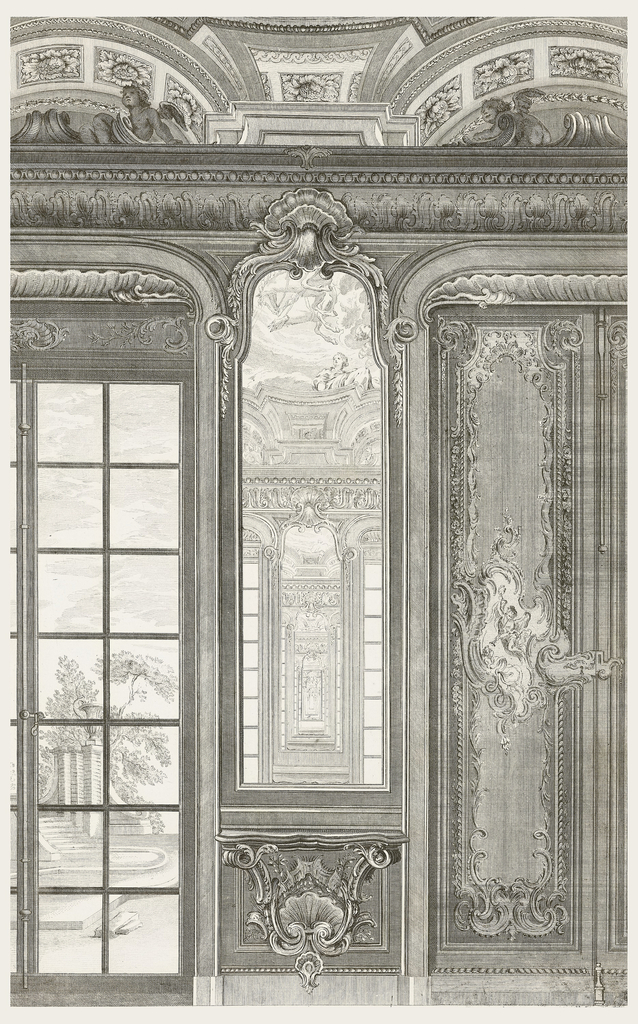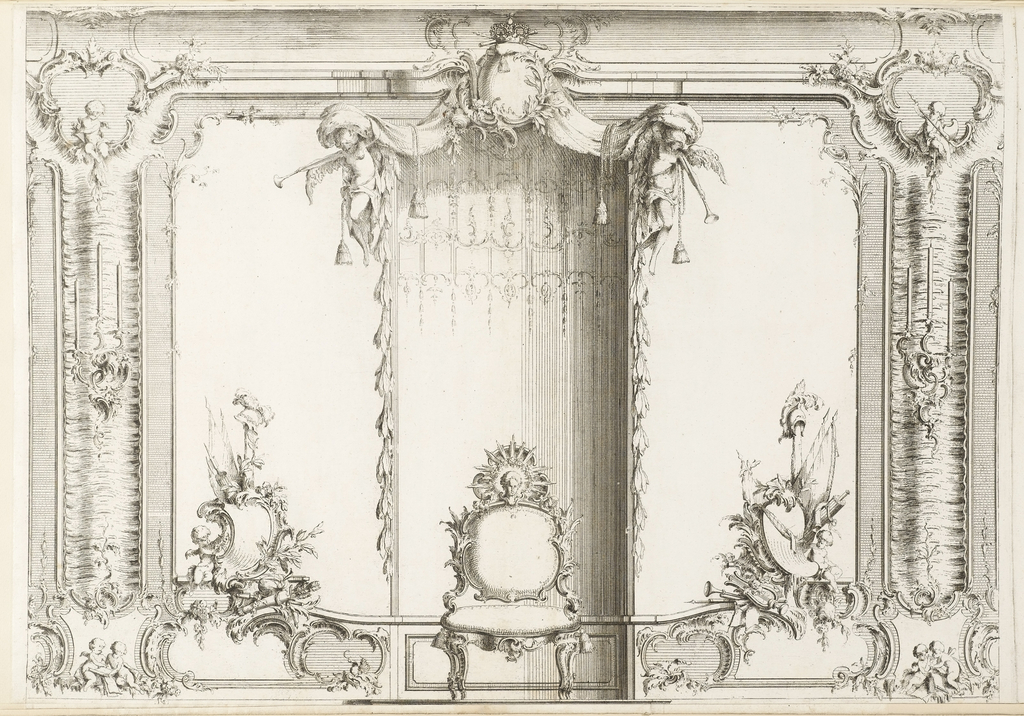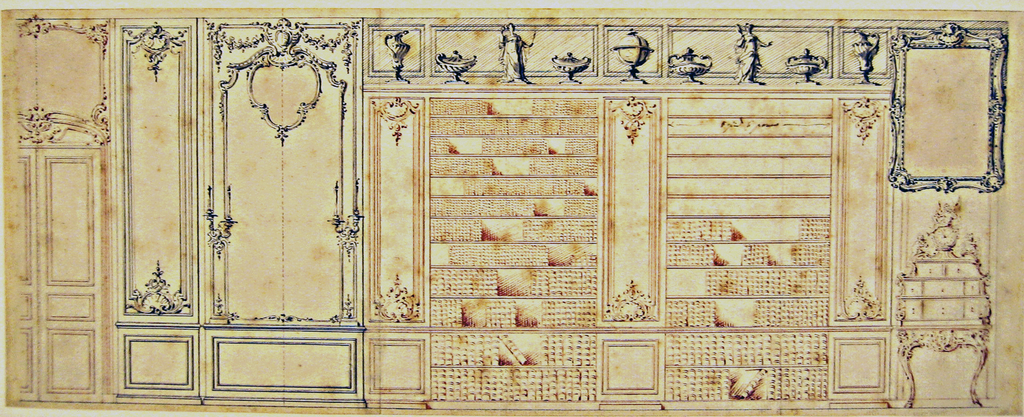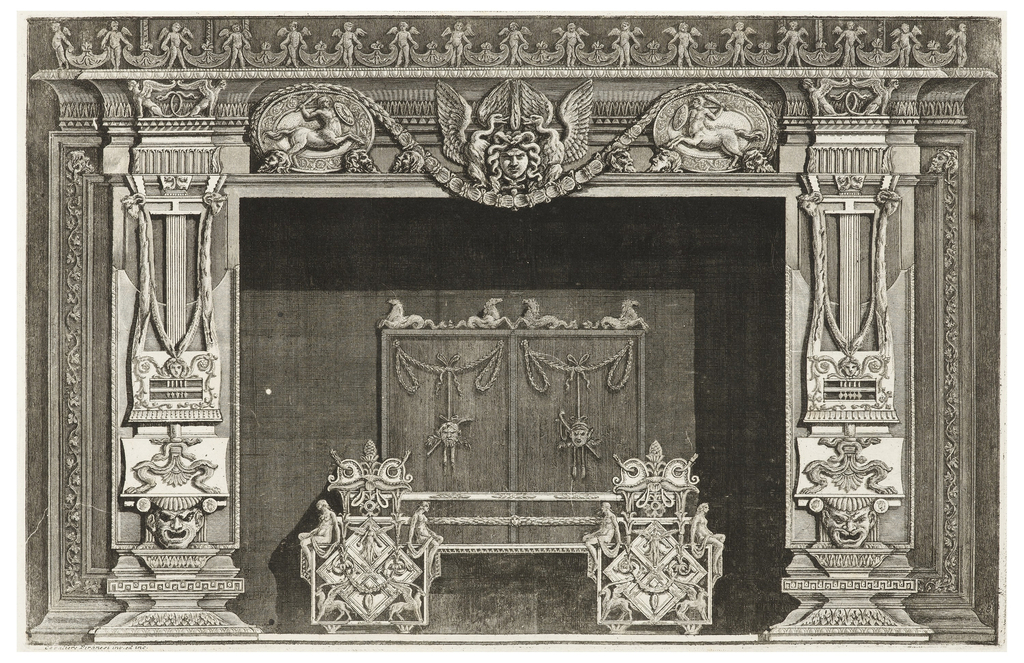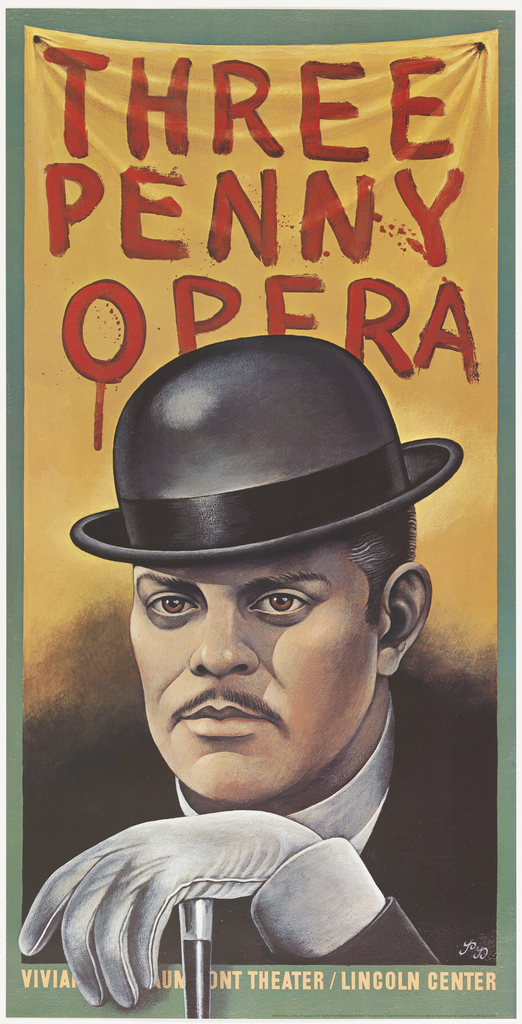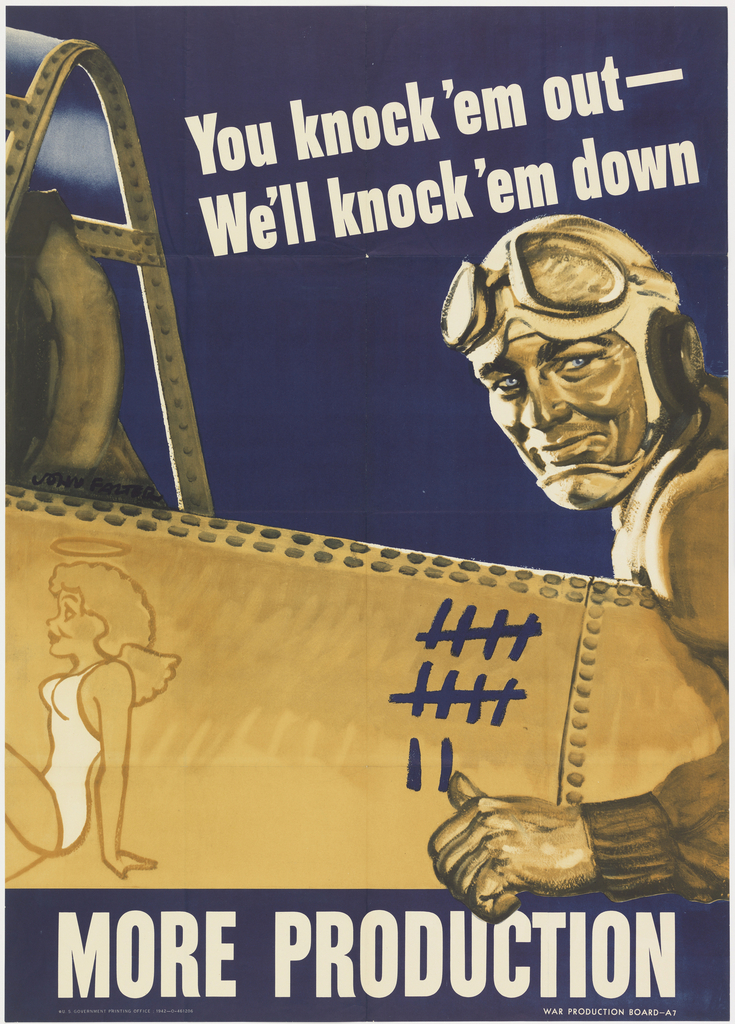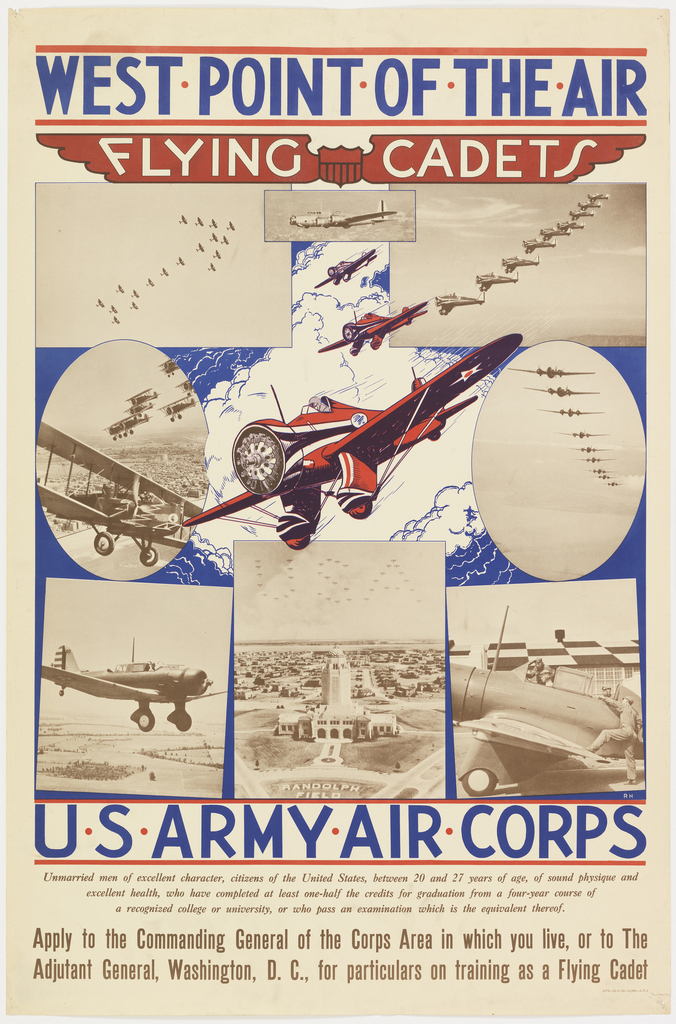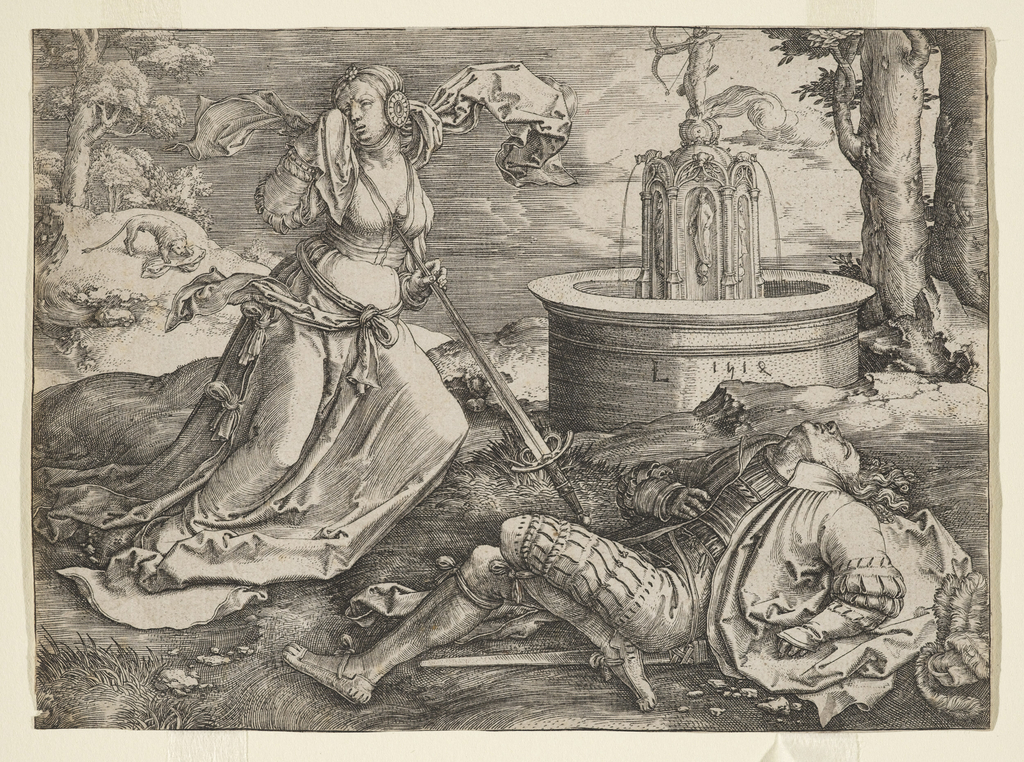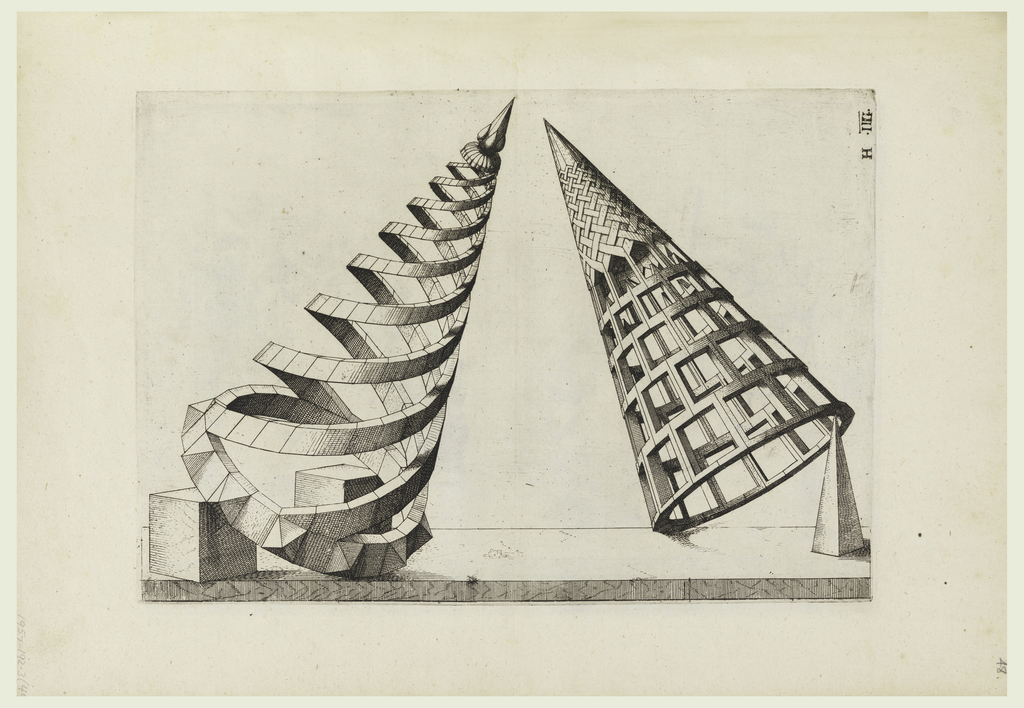Mirrors were still a relatively expensive item during the eighteenth century, but they continued to grow in fashion as technical developments made it possible for larger and larger panes to be produced. They appealed to patrons for their ability to reproduce light in darks rooms and served more vain purposes as a signifier of one’s...
The appartements in eighteenth-century interiors were organized hierarchically to differentiate between ceremonial, social, and private spaces. This hierarchy was reinforced through increasingly elaborate decoration as the designation for spaces grew more public. With this in mind, the decoration adorning the paneling, or boiserie, would have made guests aware of the types of social interactions which...
The interior decoration depicted in this drawing is extremely fashionable for an eighteenth-century home. This design exhibits the quintessential light and airy Rococo features of arabesques, s- and c- scrolls, vegetal motifs and swags, all with the appearance of symmetry. The layout of the boiserie, or wall paneling, aids in the creation of symmetry within the...
This print comes from Giovanni Battista Piranesi’s Diverse maniere d’adornare I cammini ed ogni altra parte degli edifizi, published in 1769. Piranesi created designs inspired by ancient Roman aesthetic principles, which adopted elements of Egyptian, Grecian, and Etruscan motifs until fully absorbing them as their own. In this work particularly, Piranesi included motifs straight from...
The reigning composition of theater posters in the 1970s consisted of credit lines for the cast, producers, directors, etc. Because of this, Paul Davis’ relatively simple presentation, though standard for Davis’ early posters, was completely innovative. Paul Davis approached these posters in a way which relayed nearly no information about the play beyond its title...
President Franklin Delano Roosevelt said “Powerful enemies must be out-fought and out-produced”[1] and American people did just that during World War II. FDR’s sentiment became fact through the creation of the War Production Board (WPB). The WPB turned over private factories to assist in the war effort, ramping up production goals to higher levels than...
In 1940, with World War II already underway, it seemed inevitable that America would soon be joining the fight against the Axis powers. The U.S. Army Air Corps published this recruitment poster shown above. The imagery utilized by an unknown graphic designer romanticized participation in the academy’s cadet program. The montage of photographs showcase cutting-edge planes...
Romeo and Juliet’s story is known across the world, but what about the tale that serves as the foundation for Shakespeare’s work? Ovid’s Metamorphosis tells the tale of Pyramus and Thisbe; like Romeo and Juliet, these two were young lovers forbidden to wed because of a long-standing rivalry between their families. Their love grew through...
Translated as “Perspective of regular bodies,” Jamnitzer’s book exemplifies the overwhelming resurgence and appreciation of classical texts during the Renaissance. Not only does the artist present his drawings through a Latin introduction, but the regular bodies mentioned in the title are based on the five Platonic solids of Euclidean geometry: the tetrahedron, hexahedron, octahedron, icosahedron...
